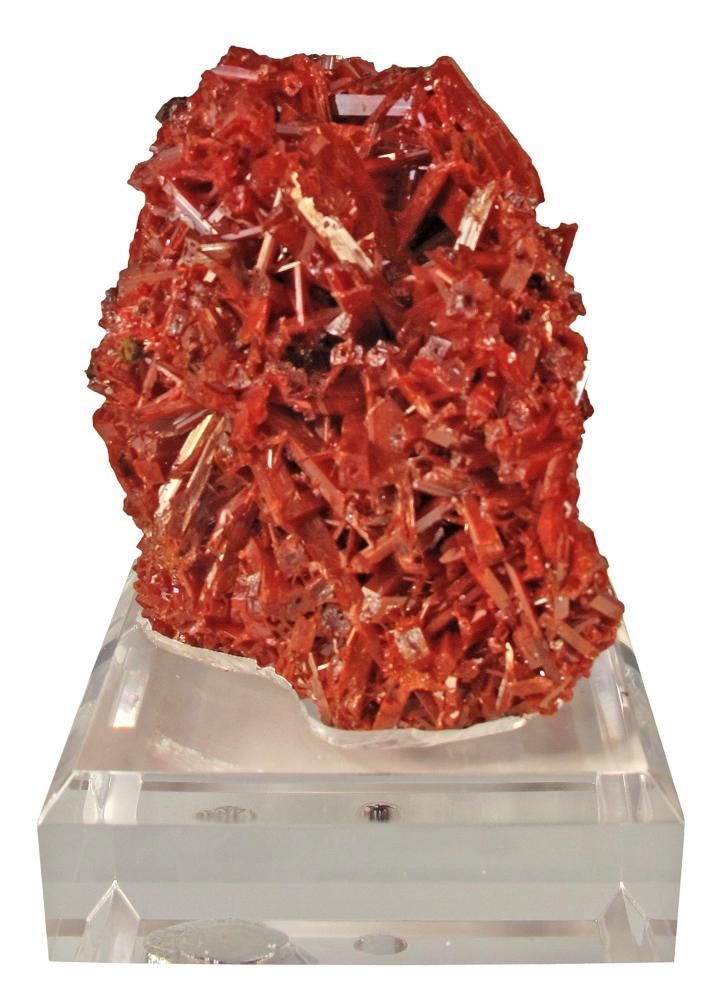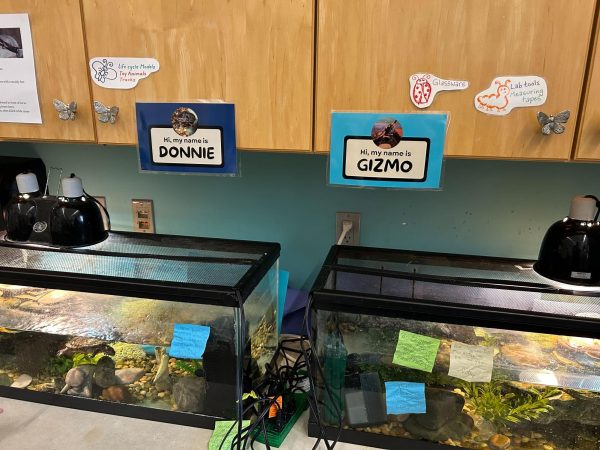Mineral spotlight: Crocoite
Crocoite is an exotic red-orange mineral with elongated crystals and often waxy luster. Its deep color and rarity make it a highly sought-after mineral for collectors. Crocoite forms in the oxidation zone of lead deposits where the oxygen and water from the surface alters the lead ore body into new minerals – often brightly colored.
Crocoite has the chemical composition PbCrO4 (lead chromate), and because of the unusual chemical combination, it is found in only a handful of locations around the world. Tasmania, off the coast of Australia, is one of the most prominent locations, which is where Calvin alumnus Bruce Dice acquired some of his favorite samples in his mineral collection.
In an interview with Dice in the fall of 2015, he described some of his favorite pieces and stories of his collection. Dice is especially enamored with the crocoite in his collection: “It’s one of the most beautiful things ever and it’s a very unusual mineral.” For the aesthetic value and difficulty to acquire, it’s easy to understand why crocoite is a favorite. Dice explained how the Smithsonian wanted to purchase the crocoite very badly at one point because of its rarity and quality. Instead, Dice gave his crocoite, along with over 300 other extraordinary samples, to Calvin in 2012.
Come see this exceptional piece for yourself in the Dice Mineral Museum located on the first floor of north hall, and open Wednesdays, Thursdays and Fridays from 12:30pm to 4:00pm.








